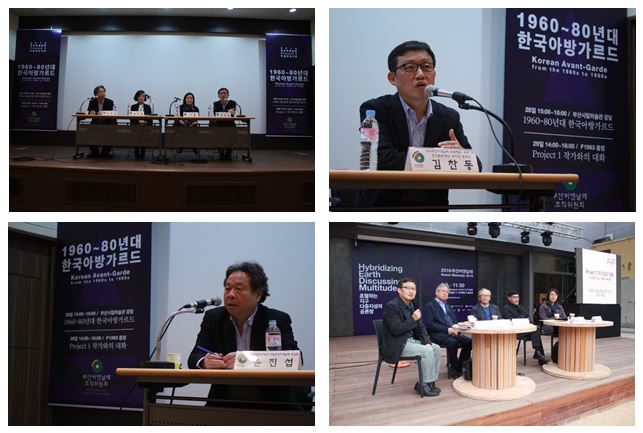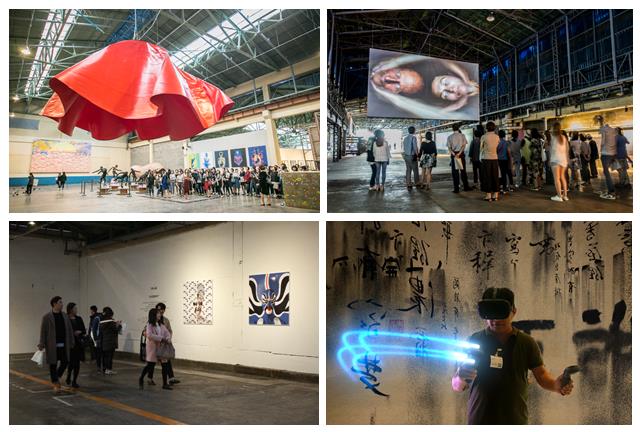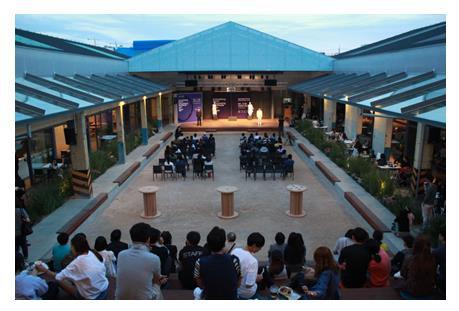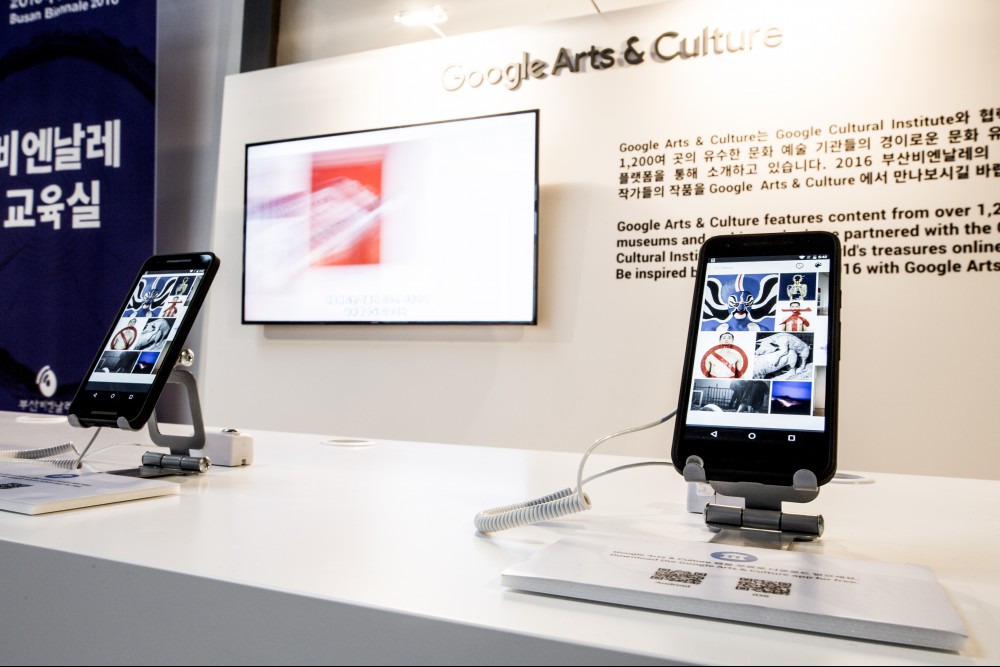Community

[Press Release] Closing of Busan Biennale 2016
Read 4,866
관리자 2016-12-05 11:13
Busan Biennale 2016 Ends after a Successful Run,
Displaying Youthful and Experimental Traits
Busan Biennale 2016 held under the theme Hybridizing Earth, Discussing Multitude has ended after its 89-day run from September 3 through November 30, 2016. The extensive exhibition featured 316 pieces by 121 artists (teams) from 23 different countries. This year's biennale, marking the 10th of its kind, has been a turning point in contemporary art history with a perspective peculiar to Asia, breaking away from the focus on Western contemporary art.
The 10th Busan Biennale marks a new watershed with its successful run
This year's Busan Biennale 2016, previously known as the Pusan International Contemporary Art Festival (PICAF) before its launch, is the 10th of its kind. Unlike other biennales, Busan Biennale is based on a youthful and experimental nature that allows it to exhibit its own identity and color, a characteristic that has attributed to its runaway success. It managed to attract 327,968 visitors, a 36% increase compared to Busan Biennale 2014, thereby displaying its potential as a world-class art festival. This biennale was a success thanks to its structure consisting of Project 1, 2 and 3. Escaping from the common format of other biennales that are comprised of a main exhibition and special exhibitions, the Busan Biennale’s setup enables each part to work organically and puts stress on Asia as a contemporary art hub.
Project 1: Highlighting Chinese, Japanese and Korean avant-garde art that spontaneously came into being in each country
Project 1 took place at the Busan Museum of Art under the theme an/other avant-garde china-japan-korea. “an” in the title refers to how the avant-garde spirit of the three nations can be considered as one and the same whereas “other” denotes how the avant-garde spirit, although unified, demonstrates how Chinese, Japanese and Korean art are placed in different situations and retain their own forms respectively. This project has drawn a lot of attention and is of great significance in terms of art history as it is the first exhibition that has featured Chinese, Japanese and Korean avant-garde art that spontaneously came into being in each country.

Academic Symposium of Busan Biennale 2016
The Korean section curated by Kim Chan-dong extensively featured Korean avant-garde art that has stayed out of the limelight, overshadowed by Dansaekhwa (monochrome painting) and Minjung Misul (People’s art). The Chinese section curated by Guo Xiaoyan displayed works produced during the period of upheaval following the Cultural Revolution in 1976 while the Japanese section curated by Sawaragi Noi, Tatehata Akira, Ueda Yuzo comprehensively covered avant-garde art that was deconstructed and then reconstructed after the atomic bombing of Hiroshima at a site referred to as “ground zero." This project served as a public forum where discourses varying in terms of content and form were raised and the avant-garde art of each of these three East Asian countries were re-discussed. It also offered an opportunity for viewers to witness avant-garde art from the three nations that they might have never seen before.
Project 2: Viewer interest sparked by harmonious arrangements of work and space

(Clockwise from left) Zoro Feigl <Poppy>, Joanna RAJKOWSKA <My father never touched me like that>,
Lee Leenam <Hybridizing Earth>, ORLAN <Beijing Opera Self Hybridization>
Headed by artistic director Yun Cheagab, Project 2 featured 168 artworks by 56 artists (teams) from 23 countries under the theme Hybridizing Earth, Discussing Multitude. Artworks varying in terms of form and content created a more “biennale-like” biennale when they came together in the unique space of F1963, a former KISWIRE Suyeong factory. The venue, completely out of line with the traditional white cube of a museum, has been credited with displaying the quintessence of contemporary art, giving not only viewers but also art insiders and experts a refreshing jolt. The artworks, motion pictures, and sounds on show were all in accordance with the building’s concrete floor and the natural light that poured down through the factory building’s transparent slates, creating a perfect environment. Viewers were able to experience a literal “hybridizing earth” in this space. Highly acclaimed by audiences, this project can be described as having displayed contemporary art’s experimental quality and attributed to its popularization.
Project 3: Formation of “discussing multitude,” forging expert and viewer engagement

Channel B
A carnival of performances, academic programs, and educational programs included in this project served as an impetus to enable citizens to gain easier access to contemporary art by offering things to view and enjoy alongside the exhibitions. The project has encouraged citizens to more actively participate in the art world and uplifted the atmosphere of the biennale through 29 events in total such as warming-up parties, a special event for art week, Channel B performances, special performances, academic programs, and special educational programs.
The onset of another “discussing multitude” on an online platform in collaboration with Google

Google Arts & Culture of Busan Biennale 2016
Everyone around the world is able to access the artworks exhibited at the Busan Biennale 2016 online via Google Arts & Culture website and through mobile devices even after November 30, the date when the biennale comes to an end. A sense of being there will be replicated by releasing museum views of F1963, the venue for Project 2. Details for each artwork are available, making viewers feel as though they are at the actual exhibition site. The organizing committee has opened some artworks to the public online in collaboration with the Google Cultural Institute, a worldwide online platform. Even after the biennale reaches its conclusion, “Discussing Multitude” will still continue online with interviews with artistic director Yun Cheagab and three curators also available on the website.
